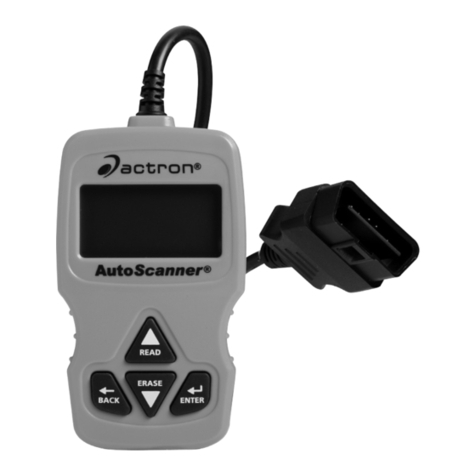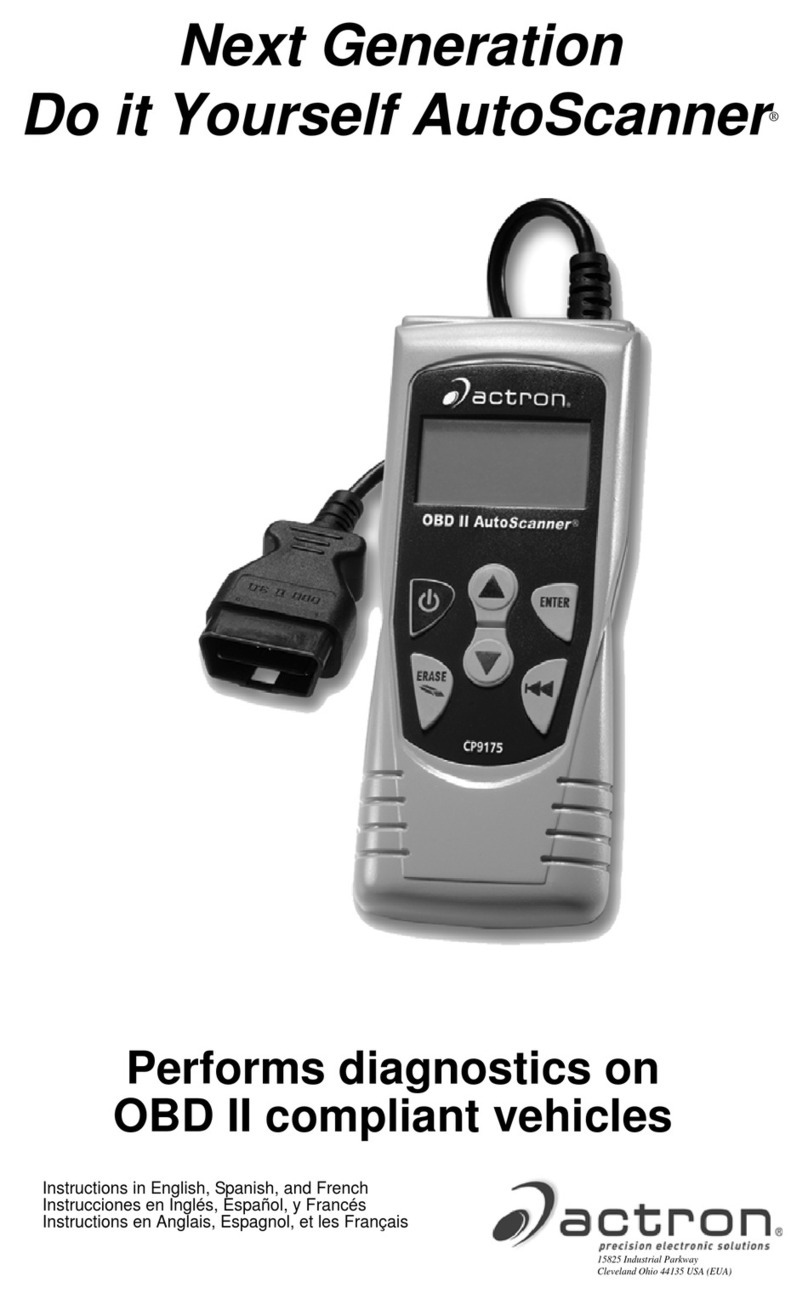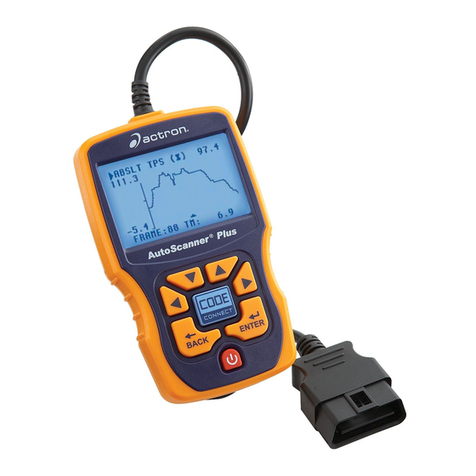
• • • • • • • • • • • • • • • • • • • • • • • • • • • • • • • • • • • • • • • • • • • • • • • • • • • • • • • • • 2 – 1
Section 2 – Getting Started
Introduction
ABS BrakeScan is the first tool designed for Do-It-Yourselfers to access the
ABSdiagnosticinformation.TheToolretrievescodesfromtheABSsystemand
provides the definition of each code to help pinpoint the problem areas within
the Antilock Brake System that may have caused the ABS light to turn on.
TheToolwasdevelopedbyexpertsintheautomotiveserviceindustrytoaccess
the information stored in the ABS module.
All information, illustrations and specifications contained in this manual are
based on the latest information available from industry sources at the time of
publication. No warranty (expressed or implied) can be made for its accuracy
or completeness, nor is any responsibility assumed by the manufacturer or
anyone connected with it for loss or damages suffered through reliance on any
information contained in this manual or misuse of accompanying product. The
manufacturer reserves the right to make changes at any time to this manual or
accompanying product without obligation to notify any person or organization
of such changes.
ABS Overview
Anti-Lock Brake Systems (ABS) began being used on vehicles in the
mid-1980's. The mechanical components of the hydraulic-brake system
(master cylinder, shoes, pads, wheel cylinders, calipers, rotors, drums, and
assortedhardware)workthesameastheydidbeforeABS.Whathaschanged,
however,istheadditionofanABScomputermodule,wheelspeedsensors,and
a hydraulic control unit consisting of solenoid valves.
How ABS works
When the brake pedal is pressed with normal force, the vehicle decelerates. If,
during deceleration, the ABS computer detects wheels going at different
speeds(wheelsslipping)fromdataprovidedby the wheelspeedsensors,then
the vehicle enters antilock mode. During antilock mode, the ABS computer will
control brake fluid hydraulic pressure delivered to the wheels. The brake fluid
hydraulicpressurewillbeequaltoorlessthanthevaluedeliveredbythemaster
cylinder. By controlling pressure to the wheels, the ABS computer can prevent
onewheelfromlockingupwhileotherskeepturning.Itcanalsopreventwheels
from turning at different rates, so the vehicle should stop in a straight line.
ABS Configurations
ABS has had three different configurations for distribution of wheel speed
sensors and hydraulic lines from the hydraulic control unit since its conception:
• The earliest ABS configuration used one wheel speed sensor that monitor
the speed of both rear wheels. If the rear wheels would lock up, the ABS
computer would pulse a solenoid in the hydraulic control unit, which would
then change the brake fluid hydraulic pressure applied to the rear wheels.
• The next evolution in ABS added wheel speed sensors to both front
wheels, while still having a single wheel speed sensor in the reartomonitor









































